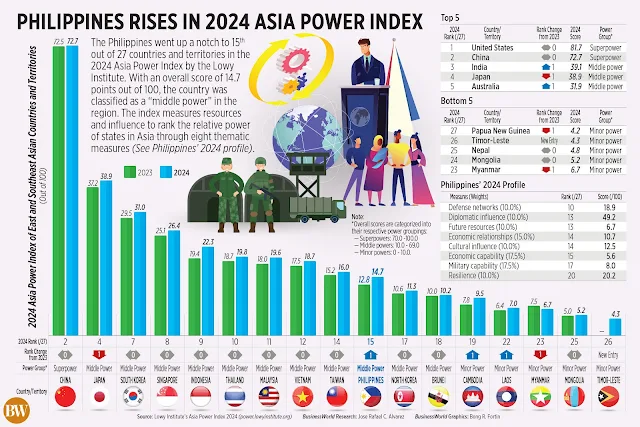PH office market surges with world-class design projects
Inquirer.net
28 September 2024
The Philippine office market, currently ranked third globally in terms of occupancy, owes much of its success to the country’s talented workforce and cost-effective business environment.
However, another key factor driving foreign companies to choose the Philippines is the availability of world-class real estate.
Iconic offices
Leading developers in the Philippines have sought the expertise of renowned international architectural firms to design iconic office spaces. This strategic move has successfully attracted top global companies to the country.
Gensler, the world’s largest architecture firm, is just one example. The firm has designed several highly successful projects in the Philippines, including the World Plaza, The Finance Center, and Ore Central.
World Plaza, Bonifacio Global City
These buildings have consistently boasted high occupancy rates even during the challenging times of the pandemic. Moreover, these office spaces have become home to multinational giants such as ING, Shell, and CIMB, further solidifying the Philippines’ reputation as a prime destination for foreign businesses.
Significant transformation
The retail sector is also undergoing significant transformation.
SM Megamall, one of the world’s largest malls, is being redeveloped with the help of Benoy, a global architecture firm known for its work in Singapore. The new design will incorporate natural light, nature-inspired elements, higher ceilings, and wider hallways, creating a more modern aesthetic.
 |
| SM Megamall, Mandaluyong City |
In Makati, Ayala Land is redeveloping Greenbelt 1 with the expertise of Gensler, Buchan, and CAN Design. This project aims to create a luxury mall experience, combining world-class architecture with premium retail offerings.
Greenbelt 1 (Ayala Land), Makati City
Meanwhile, Robinsons Land Corp. is expanding its upscale portfolio with The Jewel, a mixed-use development in Mandaluyong City. Designed by Broadway Malyan, this project will feature both a premium office tower and a luxury mall component, enhancing the city’s high-end commercial landscape.
The Jewel (Robinsons Land), Mandaluyong City
In Bonifacio Global City, Bench, a leading clothing and lifestyle brand, is setting a new standard for corporate headquarters. The company’s new building, slated for completion in 2026, is designed by Foster + Partners.
Bench Headquarters, Bonifacio Global City
This state-of-the-art space will include offices, design studios, and event venues. Bench is also targeting Green Mark Super Lower Energy and LEED Platinum certifications, demonstrating its commitment to sustainability—an increasingly important factor for companies adopting environmental, social, and governance (ESG) policies.
Sustainable, premium spaces
Such certifications are not just symbols of environmental responsibility; they are now also integral to attracting global tenants.
As more companies prioritize sustainability, buildings with LEED, BERDE, WELL certifications and the like become critical assets in developers’ portfolios.
The trend toward sustainable, premium office spaces has expanded beyond the main business hubs of the Makati central business district (CBD) and Bonifacio Global City. Since 2018, districts like Ortigas, Filinvest City, the Bay Area, and Quezon City have witnessed a surge in high quality office developments.
Projects such as Podium West Tower, GLAS Tower, One Griffinstone, Three and Four E-com, and GBF Center 1 in Bridgetowne now set the standard for premium office spaces. These properties are highly sought after by tenants and often command rental premiums of up to 40 percent, reflecting their superior quality and desirability.
Primary sources
Makati, Ortigas/Mandaluyong, and Quezon City will be the primary sources of new office space in the coming years.
With a vacancy rate of 17 percent and limited future supply, the Philippine office market is experiencing a resurgence as companies gradually return to the workplace.
As demand increases, securing prime office space will only continue to become more competitive as they are first to be filled up in their respective districts. This presents a unique opportunity today for businesses to find the perfect workspace that aligns with their needs and contributes to their long-term success.
Top destination
The future of the Philippine office market is bright, driven by strong economic growth, rising demand for quality office space, and a pipeline of exciting new developments.
As the country continues to attract foreign investors and businesses, the need for modern, well-designed office spaces will only increase.
Through investments in premium architecture and sustainability, Philippine developers are ensuring that the country remains a top destination for global companies seeking a dynamic, forward-looking business environment.










